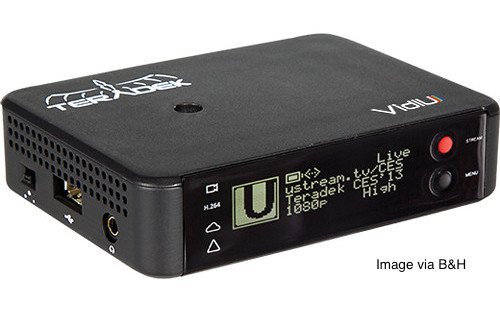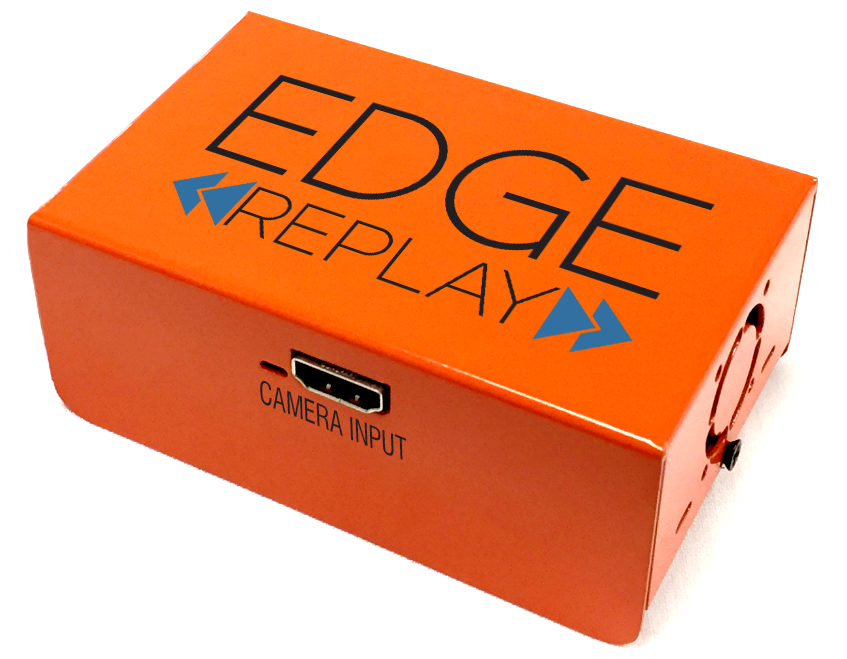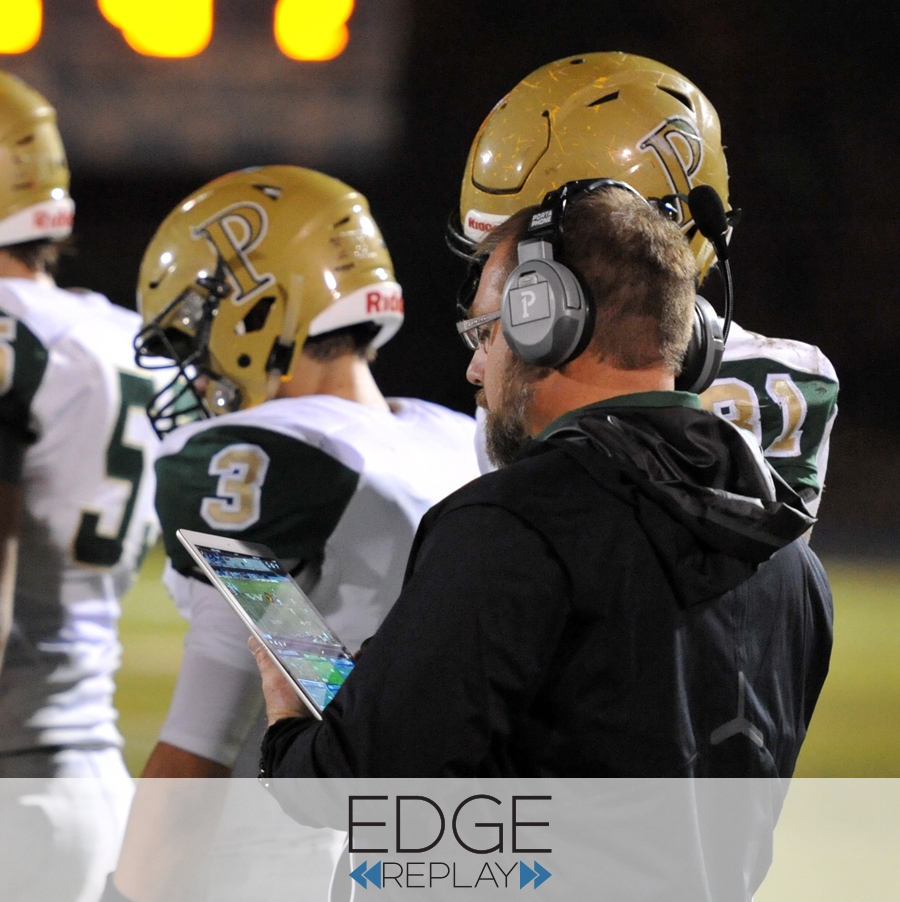The Difference Between the EDGE Replay and the Hudl Sideline - Part I
In our last post we reviewed the big questions you should be asking before purchasing a Sideline Replay System for your football team. Today we’re starting a 3-part series to discuss the specific differences between the EDGE Replay, made by Sport Scope, and the Hudl Sideline, made by Hudl. We’ll go into the pros and cons of each system and tell you why one has an advantage in a certain area whereas the other does not. (For the sake of simplicity, we will primarily discuss the difference between the EDGE Replay 2 View System and the Hudl Sideline Premium Package with a focus on the Endzone View differences).
For the topic this week we'll be discussing the difference between the EDGE Replay and the Hudl Sideline video capturing devices. In Part II, we'll survey the components in each system, the difference in software features, and uploading processes. For Part III we'll examine the number of supported camera angles and the difference in price both short term and long term.
If you currently own the Hudl Sideline and have been disappointed with the system be sure to check out our Replay Exchange Program. Send us your replay system and pay us your annual subscription fee and we'll give you the EDGE Replay in exchange. Now without further ado, let's get started!
EDGE Replay Box vs. Hudl's Teradek VidiU
The Hudl Sideline uses a third-party streaming device to capture your camera’s Endzone view and deliver the footage to your iPad. This device is a Teradek VidiU. As of 2016 the VidiU is what takes your live footage, sends it to an antenna/router, and then a bridged antenna broadcasts the signal to your iPad. Your iPad picks up the WiFi signal and that’s how you see the live-streamed footage from the Endzone View.
The EDGE Replay uses a custom EDGE recording box. The EDGE box does not live stream the camera’s footage. Instead, it records the camera’s footage on demand and then sends the recording to your iPad. This is done in a similar way to Hudl’s Teredek device. However, the EDGE box is connected to a traditional router and a connected antenna sends the signal via WiFi to your iPad.
PROS & CONS
HUDL SIDELINE:
The supposed advantage of the Hudl Sideline is that you have the live stream of your Endzone Camera’s view or Pressbox Camera’s view on an iPad. However, the disadvantage of Hudl Sideline's touted live streaming capability is that the live stream is only available on the recorder's iPad. In other words, only one iPad is capable of receiving the live stream and this is usually not the coach's iPad. Rather, a student is typically the most convenient and practical handler of operating the start and stop record buttons in order to deliver the replay to all the other connected iPads. Therefore, this method of live stream is a bit misleading as an asset and technically not much of an advantage after all.
Also, a big disadvantage is that if you want to record and play back a replay of the previous play, then the iPad is tasked with doing the computational work of making this happen. That takes time and puts stress on your iPad. Also, because live streaming simultaneously puts so much stress on your network, the download speeds are going to be slow. So when you want to see your replay of the last play, you have to wait substantially longer than you’d like. If the game is moving fast, it might be too late to review the previous play by the time it’s available.

Another disadvantage of the Teradek is that the box only has a HDMI input and no HDMI output. You must deliver an HDMI signal from your camera directly to the VidiU. If you’re equipping your Endzone Camera tower with Hudl Sideline, this means you’ll also need a HDMI splitter to send one signal to the Teradek and another to your tower’s monitor screen so the operator can see what the camera sees. This is just another component that needs power and further complicates your set-up.
Thirdly, if you’re trying to record a play and your network goes down for whatever reason, then that play is lost forever. The disadvantage is that the Teradek streaming device doesn’t have internal memory. It can’t store your recorded plays. The recorded plays only get stored on your iPad after the stop record button is hit and the streamed footage is processed. So if the network goes down, this interruption means the streamed footage is lost. The play cannot be recovered even after your network comes back online.
This also means that if you were to accidentally delete your game files on your iPad before they were successfully uploaded to your computer or online, then those clips are gone forever.
Lastly, the Teradek VidiU has a few external buttons that unfortunately cannot be disabled. Therefore, if anyone is to accidentally tap one of these buttons then the internal configurations are no longer at their proper settings. This might be confusing especially when you're in a crunch to get the system started before game time. It's even possible to delete your network configurations! If that happens, you'll need to consult Hudl and go through the arduous process of getting it fixed. Also, the VidiU boot up time is substantial. It could take up to several minutes before it's operational. Once again, this is inconvenient and can be confusing right before kickoff.
EDGE REPLAY:
The disadvantage of the EDGE box is that you don’t get a live stream on your iPad.
However, it should be noted that not having a live stream isn't really a disadvantage. In the game of football, having the elevated angles from the Endzone and Pressbox streamed to your tablet is a cute novelty, but really how practical is this? Most coaches are fine with watching the current play from the sideline rather than staring at their tablet as it happens. What matters most is the replay after the play is over. This is when the coach needs to analyze both views, slow things down, and make a decision based off of his review. And that’s what the EDGE excels at. The EDGE box’s only concern is delivering the replay of both angles to your iPad as fast as possible. Nothing more, nothing less.
And remember, the Hudl Sideline can only deliver the live stream to one iPad. And most likely the coach is not going to have time to take on the task of hitting start and stop to get the replays. Therefore, it's highly unlikely his iPad will have the livestream, which completely defeats the purpose.
Another one of the big advantages for the EDGE is that the box does all the computational work of processing your replay, not the iPad. Furthermore, the EDGE box stores your recordings on the box, so they’re always accessible until you delete them.
Moreover, because the EDGE is not required to live stream and the box was designed from the ground up to do the work of delivering your replay footage (unlike an iPad), the download speeds are near instantaneous. A typical play lasting 10 seconds takes the EDGE about 1 to 2 seconds to download. For longer plays that last anwhere from 45 second to 1 minute, EDGE download times are at most 4 to 8 seconds whereas Hudl Sideline download times are 1 second per second of recorded footage. This means if a play is 30 seconds long, your download time could be up to 30 seconds. That’s a long time to wait on the sideline if you're using Hudl, but a huge advantage if you're using EDGE.

Additionally, all EDGE boxes are equipped with a HDMI output. This means the box itself functions as a HDMI pass-through. Why does that matter? Well, remember how the Teradek VidiU only has a HDMI input and, therefore, requires a splitter in the Endzone? Not so with the EDGE. With the EDGE box you simply plug the HDMI cable coming from the camera into one side of the box and then use another HDMI cable on the other side, linking the EDGE’s HDMI output to the monitor screen. This smartly bypasses the need for a HDMI splitter device, which is just another component that will need power in the Endzone.
As already mentioned, the EDGE box also has an advantage due to its internal memory. Because all recordings are stored on the EDGE box until you delete them, you’re able to recover plays even if your network goes down. If you start recording with the Hudl Sideline and the network crashes, that play is gone forever and all subsequent plays being filmed by the camera operators will not be stored until you get the network back online. This is not the case with the EDGE. The EDGE box is not dependent on your network. So if you hit record on the iPad and your network goes down, the EDGE box will continue to record everything the camera operators are filming until you bring the network back up and hit “Stop Play” on your iPad. Thus, plays can be recovered during a hiccup where they can’t with Hudl.
And because of that internal memory, you always have a back up of the game film on the EDGE box until you manually delete the files. So unlike Hudl, if you accidentally delete your clips on the iPad before successfully uploading online, you can rest easy because the backups are attainable on the EDGE box.
Last but not least, the EDGE box has no external buttons to adjust configurations and boot up time is at most 15 seconds. So unlike Hudl's Teradek, you can't mistakenly alter any crucial settings and there's little to no waiting for system operation.
As already alluded to, the capturing device makes or breaks your replay system. Do you want a system with a third party device shoehorned into operation as a replay system? Or do you want something built from the ground up specifically for football sideline replay?
If after reading Part I of this series you're already convinced and you currently own Hudl Sideline or another replay system, don't forget about our Replay Exchange Program. Send us your replay system and pay us your annual subscription fee and we'll give you the EDGE Replay in exchange. Call (888) 335-7875 for more details or click HERE.
Stay tuned to the Sport Scope Blog for Part II as we dissect the differences in components, software features, and uploading processes!
Posted on February 10, 2017 at 11:30 AM
